
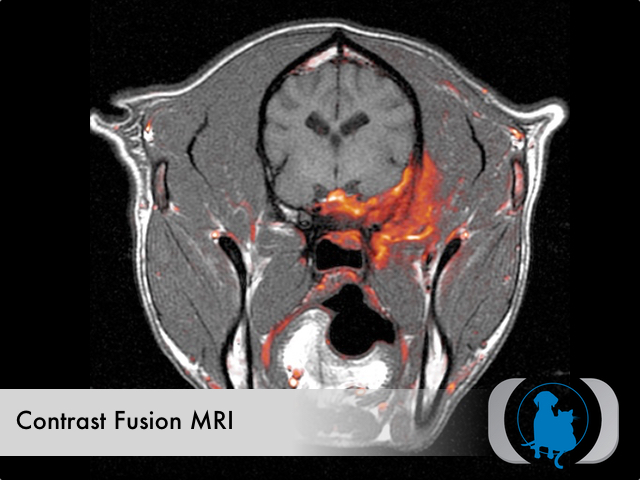
Note the use of contrast fusion MRI imaging that highlights (in color) the area of infiltrative pathology in this 1 year old Female spayed Labrador Retriever dog.
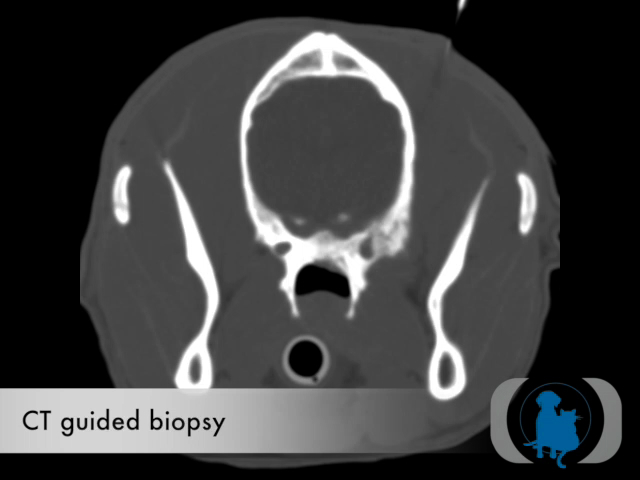
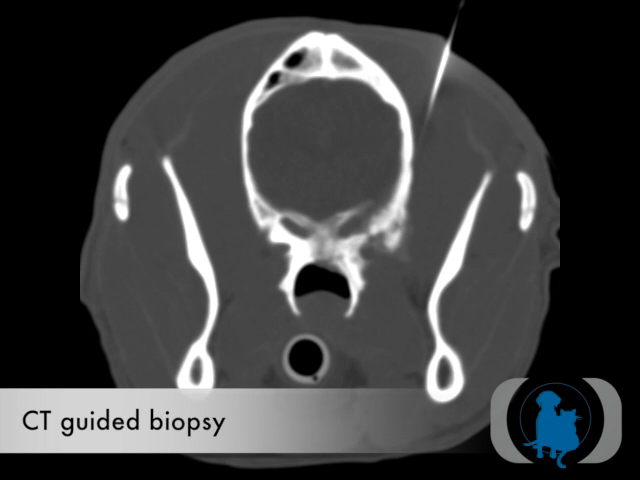
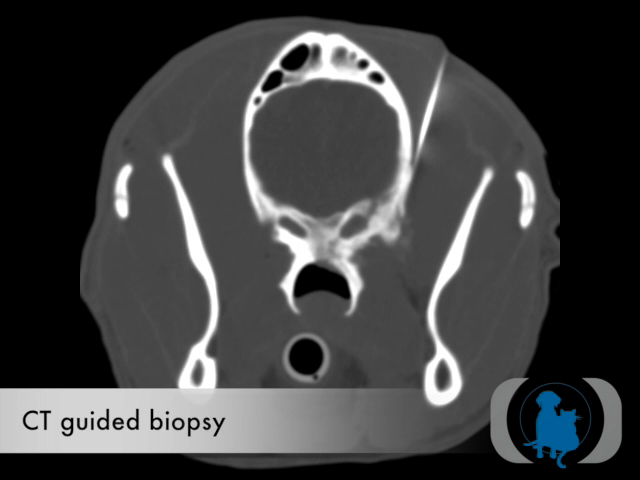
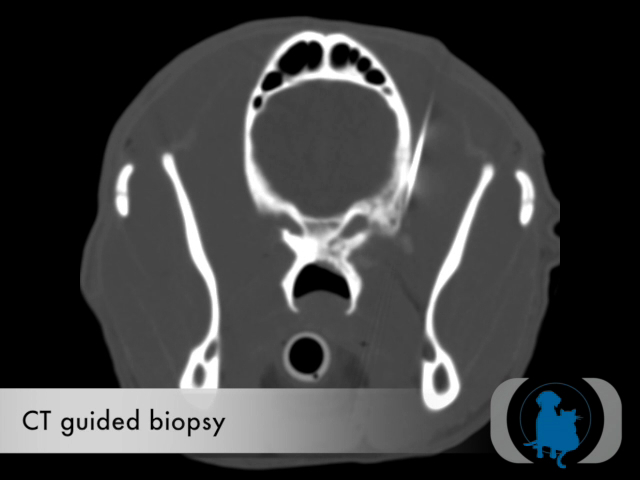
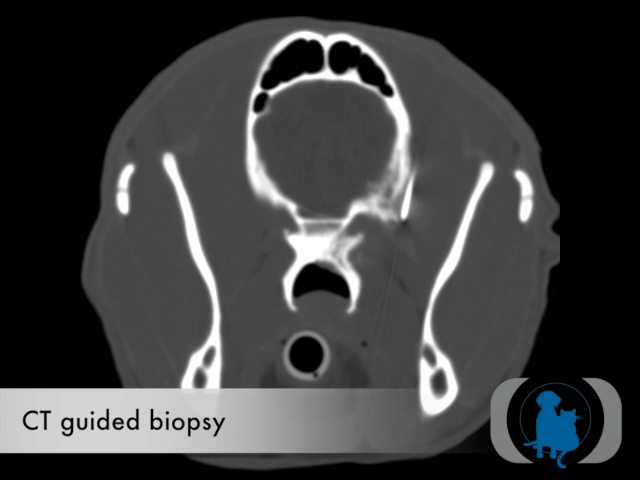
CT guided biopsy of the area identified on cranial MRI allowed confident collection of representative tissue that resulted in a firm diagnosis of cryptococcosis infection.
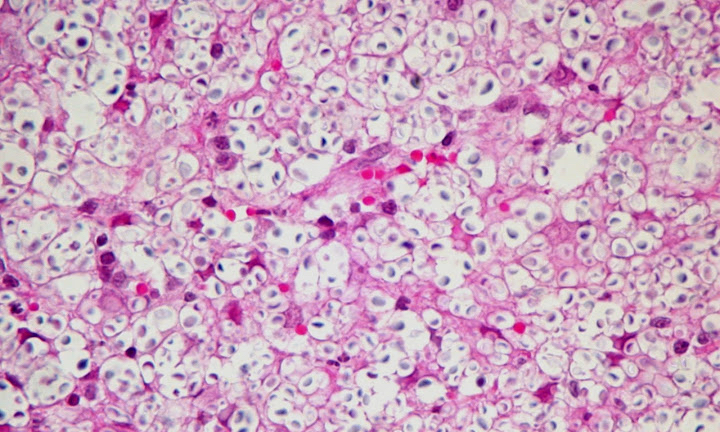
Histopathology revealing the Cryptococcus neoformans organism. Cryptococcus is a ubiquitous soil fungus that more commonly infects cats and less frequently dogs.
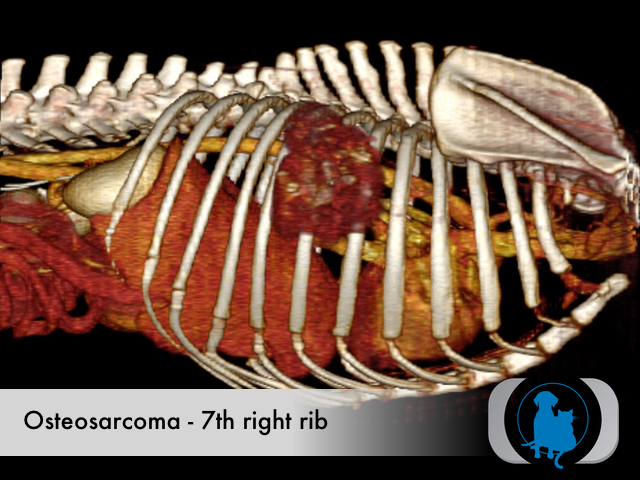
3D Volume reformat of a thoracic CT of a 10 year old female spayed Golden Retriever dog with a rapidly growing thoracic wall mass. CT confirmed the origin of the mass was the 7th rib on the right.(see biopsy image below)
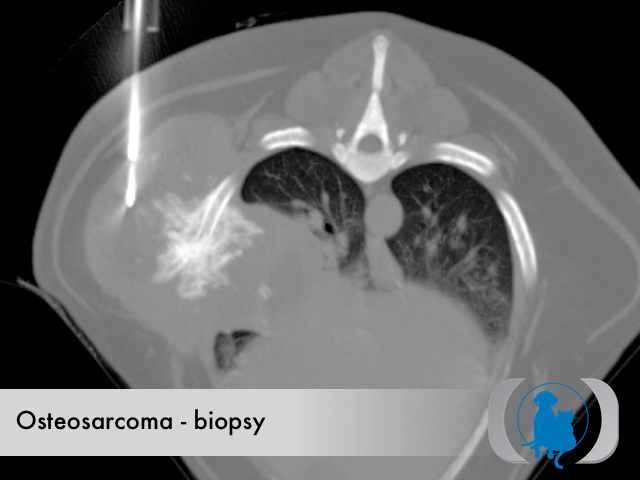
CT guided biopsy of the same dog as the image above allowed a definitive diagnosis of osteosarcoma.
Background
CT fluoroscopy
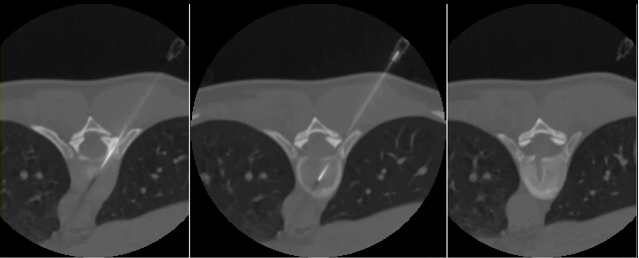
SUREFluoroTM technology provided by AVMI's new Toshiba PRIME 80 slice CT scanner allows real time image guided biopsy of the most hard to reach areas.
CT Fluoroscopy in Veterinary Medicine
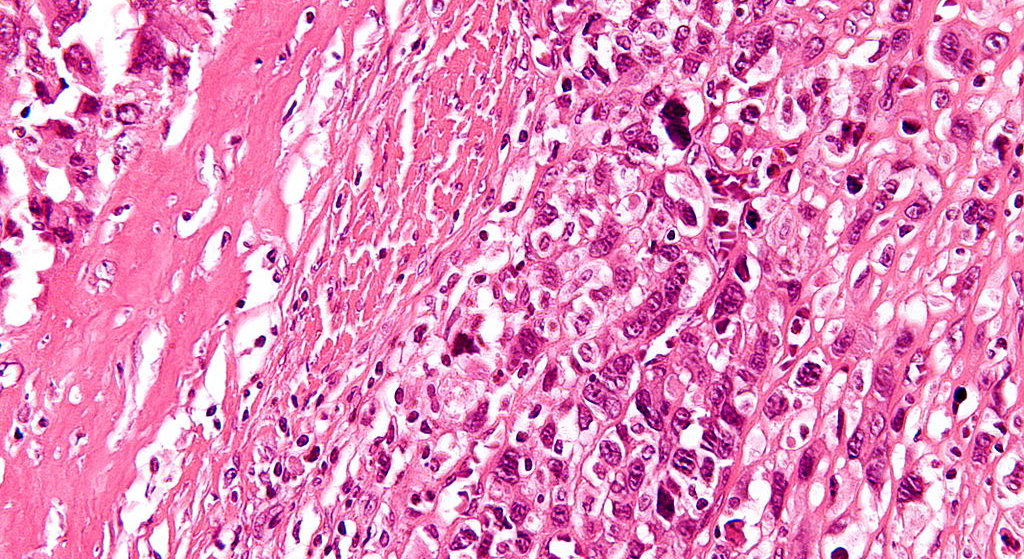
High magnification of a biopsy showing osteosarcoma (malignant cells in the lower right of the image) with osteoid formation.
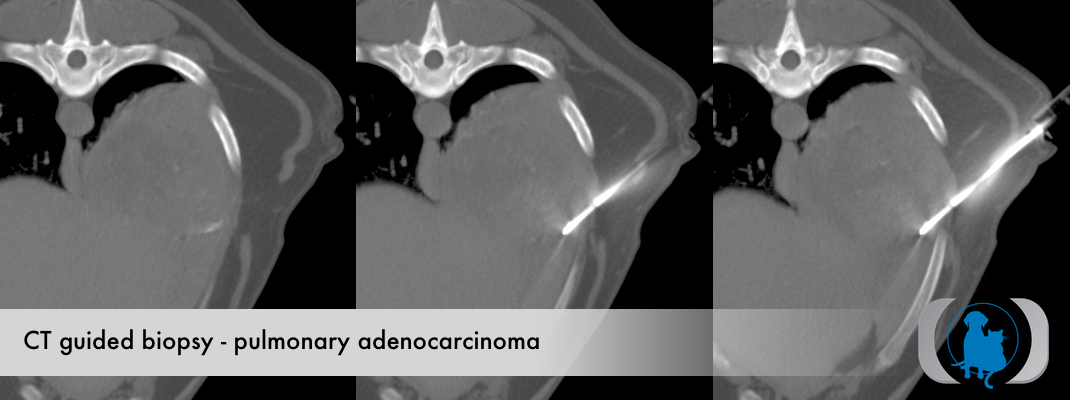
Large pulmonary masses like this pulmonary carcinoma are good candidates for traditional CT guided biopsy.
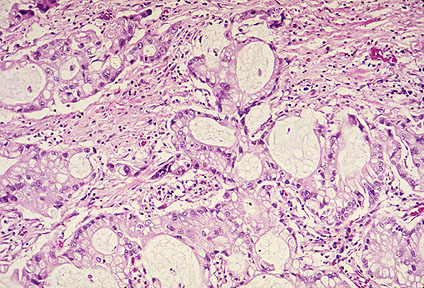
Histopathology of biopsy from mass confirming pulmonary adenocarcinoma.

